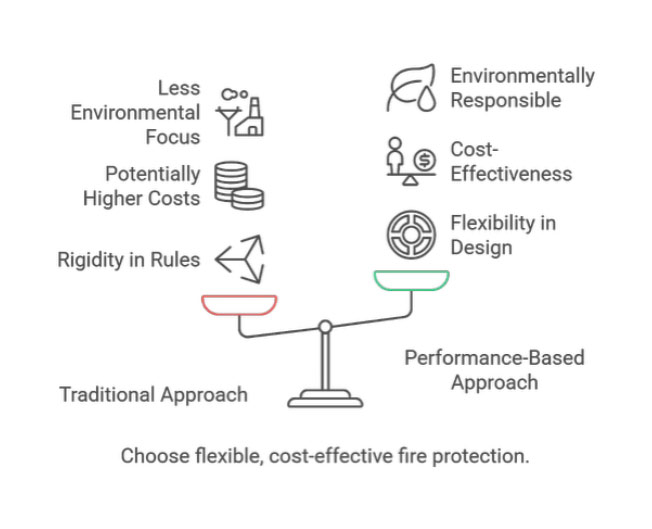Our team of experts offers regular updates on FPE and life safety best practices, code modifications and more.
August 26, 2025

Aircraft hangars are unique structures that require specialized fire protection. Historically, these systems have relied heavily on foam-based suppression, designed to address the risk of large fuel spills. However, experience shows that these events are rare. In fact, accidental discharges of these systems are much more common, often causing significant damage to aircraft, facilities, and even the environment.
There is a smarter, more flexible approach to hangar fire protection: the performance-based, risk assessment method.This method allows for tailored fire protection solutions based on a detailed understanding of the specific risks and operations of each hangar, rather than a one-size-fits-all approach.
Traditional code requirements prescribe specific fire protection systems for hangars, primarily based on the hangar's size and the type of aircraft it houses. This approach often mandates the installation of foam systems, regardless of the actual risk, which can lead to several issues:
The performance-based approach to fire protection uses a detailed assessment of the risks that are unique to each hangar. This risk assessment is a systematic evaluation of the potential fire hazards, the consequences of a fire, and the effectiveness of various fire protection measures. This approach is based on the most current edition of NFPA 409, Standard onAircraft Hangars.
Key elements of a risk-based fire protection design include:
When fire protection is built around the real risks in your hangar, the benefits add up quickly. Here are several advantages of using a risk-based approach.
The risk assessment process involves a team of stakeholders who will work together to understand the risks and recommend a solution that meets the goals of the project while also adhering to the fire codes.
For example, many hangars are used primarily for aircraft storage and basic inspections, with no significant maintenance performed on site. In these cases, the risk of a fuel spill is minimal, and it may be appropriate to eliminate foam fire protection systems.
Similarly, if a hangar has a robust automatic sprinkler system or methods of early detection, then a low risk of fire spread and low consequences may also be determined, making the need for additional fire suppression beyond a water-based sprinkler system unnecessary.
 Download Infographic
Download InfographicThe performance-based approach to fire protection is a modern and effective way to design fire protection systems for aircraft hangars. By conducting a thorough risk assessment and taking a more tailored approach, hangar owners, architects, and building officials can develop fire protection systems that are cost-effective, environmentally responsible, and provide the most appropriate protection for their facility and its contents. This method moves beyond rigid, prescriptive rules to a system that addresses the specific needs of each hangar.
By embracing the performance-based method of fire risk assessment, you can achieve a higher level of safety and protection for your aircraft hangar, with the flexibility to meet the specific challenges and needs of your facility.
Performance Based Fire uses a performance-based approach when navigating aircraft hangar fire protection challenges. Partner with us to keep your aircraft hangar safe and for tailored solutions that adapt as your needs evolve. Contact us today to start the conversation.